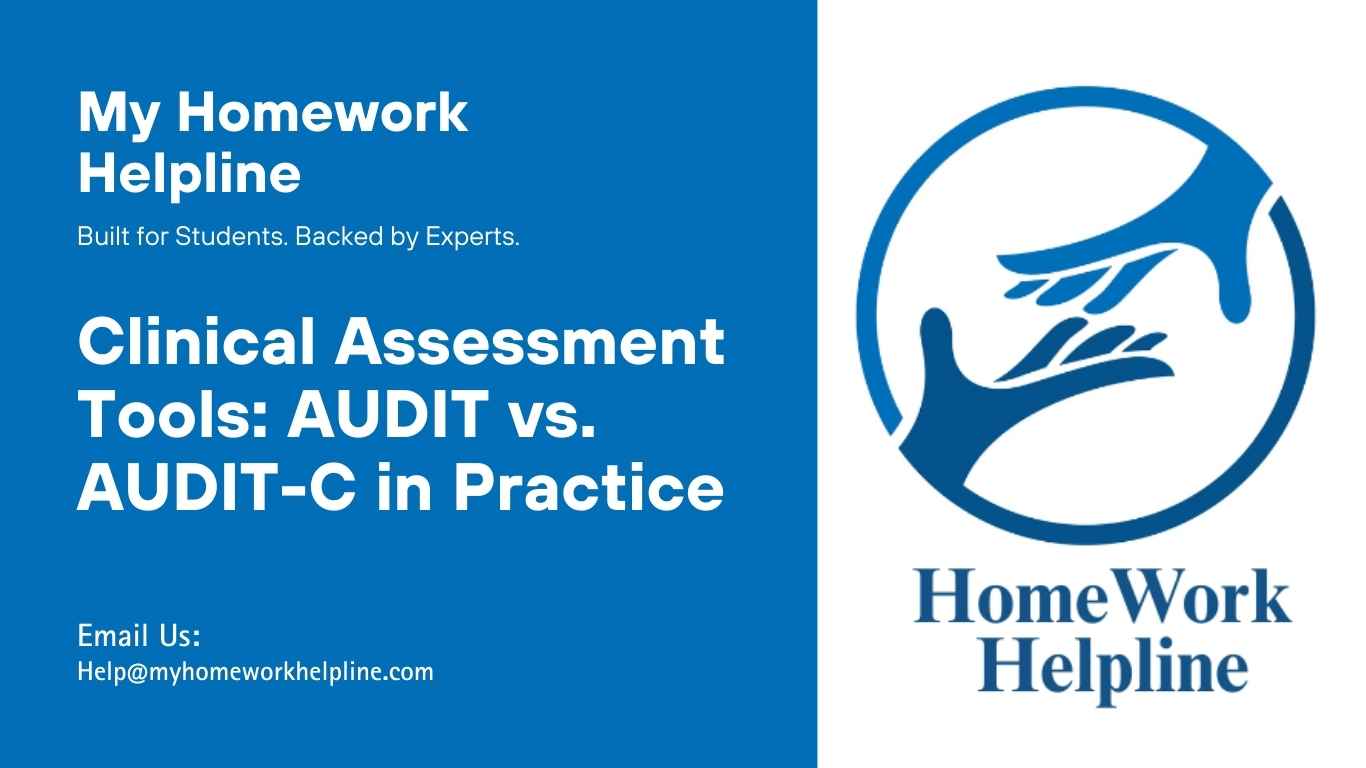Understanding Clinical Practice for Substance Use Disorders: AUDIT vs. AUDIT-C
Discuss the differences between the AUDIT tool and the AUDIT-C tool
The audit tool gives an asset of indication of frameworks for which a practice must be carried out and within that a deliberation for the cause of action. It is thus definitively used by the clinical practitioner to identify and assess the patient’s condition in a way that is unique to their circumstance. Therefore, the AUDIT tool sets a set of screening and referral strategies that are instrumental in the implementation of resources. Therefore, the AUDIT tool provides a foundational guideline to categorize a patient within a specific condition. It thus allows simple identification of the cause of drinking and illness presentation (Seth et al., 2015).
On the other hand, for substance abuse, AUDIT-C is a screening that is specific to the type of abuse being tested and within that identification of the patient’s level of concerns. By this measure, the tool facilitates the categorization of the patient’s hazardous status within a spectrum of expected disorders in a way that is very specific to them. This, therefore, allows for the determination of whether the patient is a hazardous drinker and is actively drinking and or codependent on substance use (Council for Mental Wellbeing, 2022). In general, AUDIT is a tool to understand the cause of presenting issue while AUDIT-C is a tool to identify the level of unhealthy alcohol use.
Need help analyzing the AUDIT and AUDIT-C tools in clinical practice? Our experts offer comprehensive psychology assignment support on substance use disorders to guide you through writing essays, understanding screening tools, and applying clinical frameworks effectively. With step-by-step guidance and tailored homework assistance, you can master the concepts, improve your grades, and gain confidence in completing your psychology assignments. Let us make your learning process smoother and more efficient.
Briefly, what are the pros and cons of using AUDIT-C vs. full AUDIT instrument?
AUDIT-C allow for better screening aspects as they integrated a better understanding of mental and behavioral component in trying to diagnose the patient hence a risk reduction-based tool. At the same time, within that, it allows for the development of a strategy for treatment to be specific to the patient and thus unique to them. AUDIT as a tool bases care on evidence models that facilitate the realization of challenges that are unique to each patient and thus potential barriers to their health leading to a more proactive care delivery (Council for Mental Wellbeing, 2021).
AUDIT-C needs an already established diagnosis of a drinking problem hence can be difficult to use in establish a pattern that could point out to drinking is the cause of the presenting illness. However, a full AUDIT instrument is very specific in its questioning and can therefore make it easy for identification separate from the illness. At the same time, cumulative scores of AUIDT-C can often lead to inconsistencies, especially concerning drinking limits. However, AUDIT is standardized and thus applicable across a wider application (Seth et al., 2015).
References
National Council for Mental Wellbeing. (2022, September 21). Oral Health, Mental Health, and Substance Use Treatment Toolkit. National Council Organization. Retrieved from https://www.thenationalcouncil.org/resources/oral-health-mental-health-substance-use-treatment-toolkit/
National Council for Mental Wellbeing. (2021, April 1). Access Community Health Centers Integrated Primary Care Consulting Psychiatry Toolkit. National Council Organization. Retrieved from https://www.thenationalcouncil.org/resources/test-accordion-component-2/
Seth, P., Glenshaw, M., Sabatier, J.H, Adams, R., Du Preez, V., DeLuca, N., Bock, N. (2015). AUDIT, AUDIT-C, and AUDIT-3: drinking patterns and screening for harmful, hazardous, and dependent drinking in Katutura, Namibia. PLoS One 10(3): e0120850. DOI: 10.1371/journal.pone.0120850

